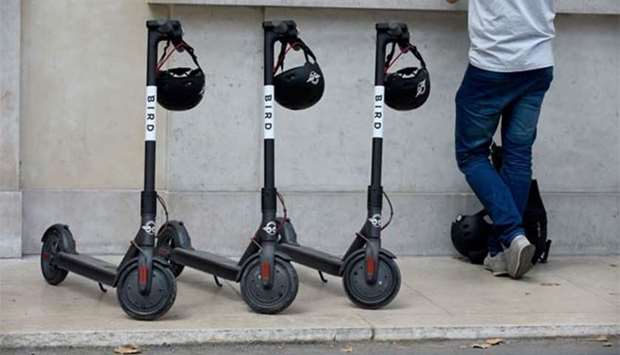Strolling along elegant boulevards is one of the pleasures of visiting Paris. But these days pedestrians and tourists need to keep an eye out for speeding scooters, hoverboards, Segways and bicycles, as well as the sights.
Over the past year the number of ways of getting around the city has blossomed.Besides on foot and via Velib, the decade-old bike-share scheme now getting an overhaul, there are three other bike-sharing firms, three electric scooter operators and hundreds of people riding single- and double-wheel hoverboards.
But the proliferation of transport comes with a downside: a walk beside the Seine or down the broad sidewalks of the Champs-Elysees can involve dodging an onslaught of commuters zipping along at speeds of up to 28 kph.

Head of US electric scooter-sharing service Bird, Kenneth Schlenker, drives one of the company's electric scooters in Paris.
While many ride on the roads, others feel safer on the pavements, which means pedestrians need to be on their toes. As the city, one of the world's top tourist destinations, fills up with foreign visitors during the summer, it can be a serious obstacle course for the uninitiated.
"I use electric scooters every day to go to work or meet clients. They are faster than Uber, taxis, the metro, everything," said Benjamin, 28, a commercial manager in Paris.
"I can't lie, scooters are dangerous," he said, saying it was the case for both riders and pedestrians. "We have no helmets and the roads can be unsafe."
An elderly couple from the US state of Georgia said they couldn't believe how fast scooters went. "They don't watch the pedestrians at all," said the woman, declining to give her name.
"One nearly ran me over."
For walkers, obstacles are only likely to increase.
Paris Mayor Anne Hidalgo is intent on reducing emissions and encouraging new transport. In the coming months, another electric scooter operator will launch and another bike-share scheme, this time offering fast electric bikes.



